May 15, 2010
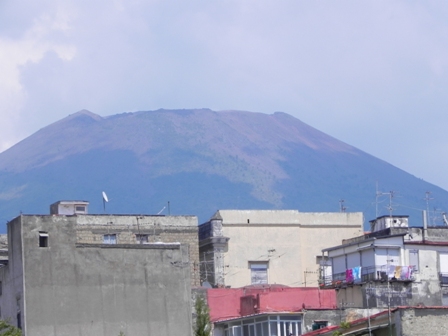
Mount Vesuvius looms over everything like a dark, gloomy
guardian. It must be funny to live next to an active volcano that brings
tourists and money to town but could rain destruction down on you at any
time... |
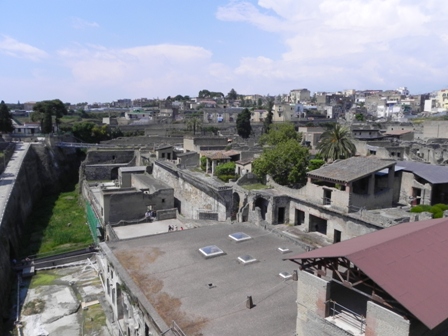
Here we are at Herculaneum, looking down into the ruins,
which are situated in the middle of a modern neighborhood and set apart by
walls.
Briefly, Karen feared that we would just be standing
up here, looking down at the ruins. That wouldn't be any fun. But then
we saw some people in the ruins and knew we would be going down.
See the grassy area to the left? That was the
beach! Herculaneum was a beach resort town. |
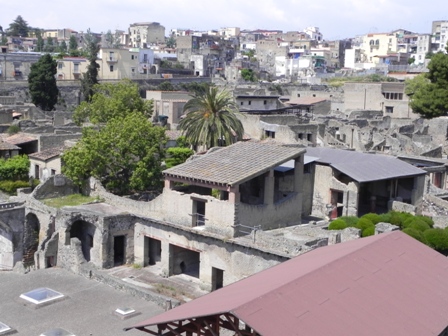
In this picture, you can see the ruins at the lower
level, surrounded by the normal modern neighborhood above. |
The guide said that the reason more of Herculaneum is not
excavated is that it is underneath where people currently live.
Plus, there is the dilemma that, whatever you uncover is
inevitably harmed by that exposure.
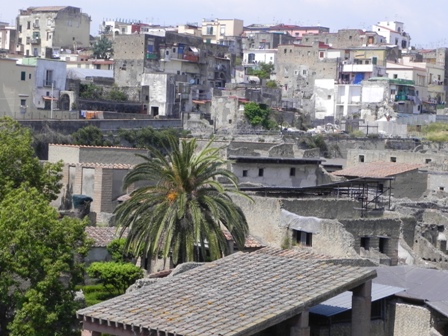 |
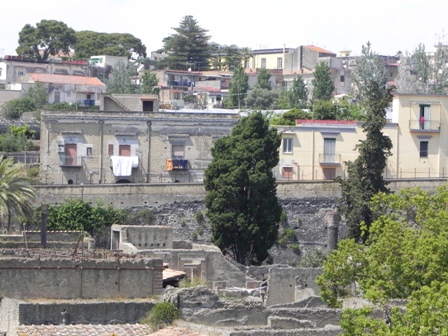
Those white bed sheets drying on the balcony caught our
eye. |
The public bathhouse currently has glass skylights
covering the openings in the roof. The holes are original but the glass is
not.
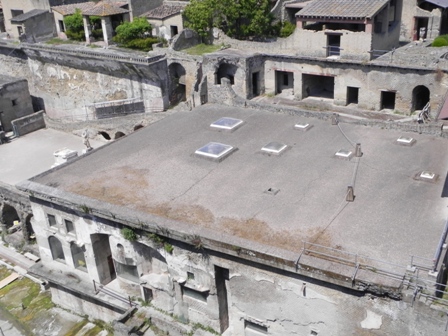 |
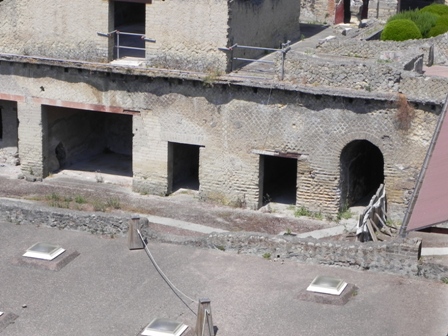 |
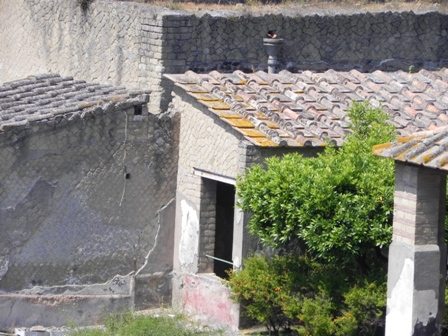 |
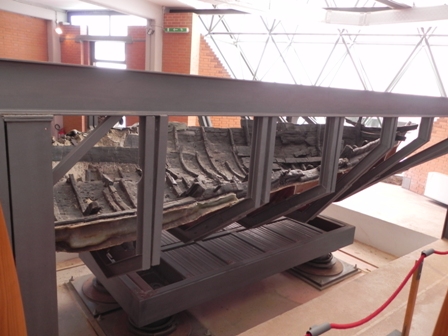
Here are the remains of a boat that was found capsized on
the beach once excavation started. |
The torrent of mud that covered Herculaneum washed down
over the city and into the sea, and capsized this boat and killed everyone
in it. The boat contained human remains, but
they are not here in this little museum.
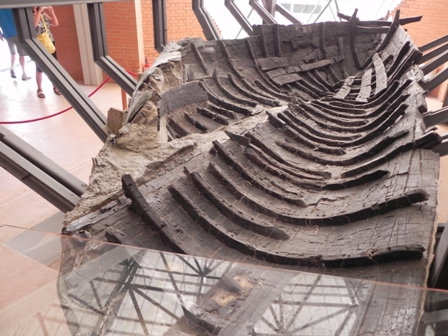 |
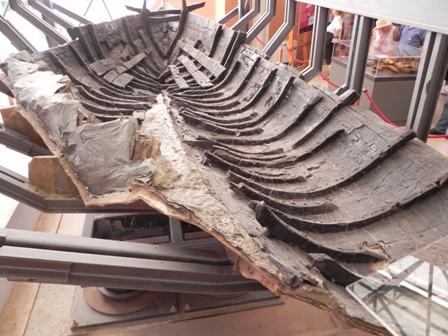 |
Here we are again, looking down into the ruins, itching
to get down there.
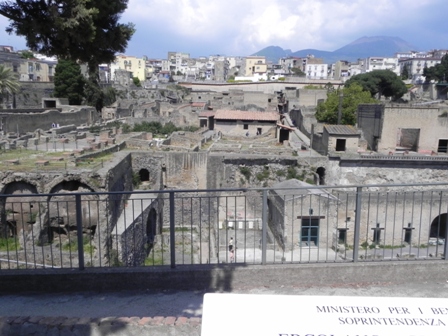 |
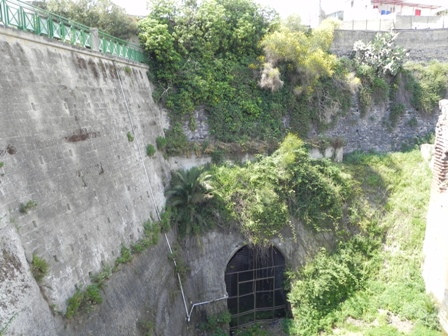
Again, this is where the beach used to be. |
This is the part of town that faced the beach.
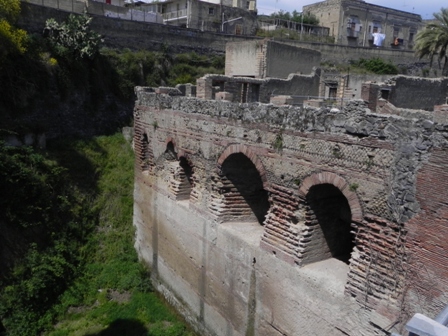 |
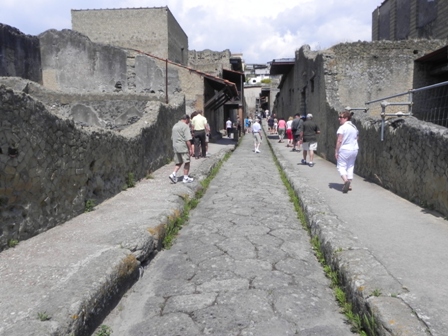
Finally we are here! We are on an actual ancient road.
|
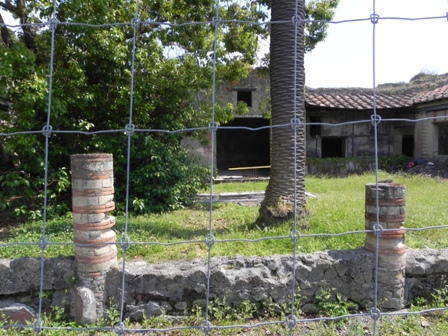
Looking into the yard of one of the houses. |
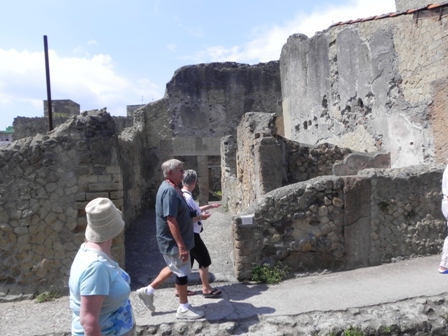
Our guide talked about how Herculaneum was originally a
resort town where the rich had huge houses, but that later on the rich left
and sold the large houses to people who rented out rooms to poorer people. |
Mosaics on the floor
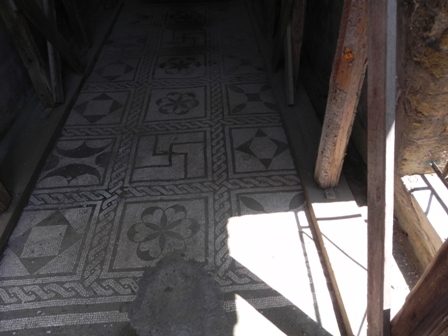 |
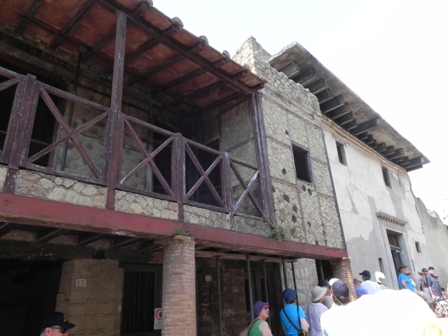 |
It was so charming to look down alley ways and see
multiple archways and doorways.
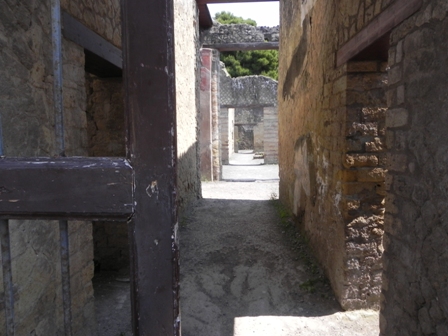 |
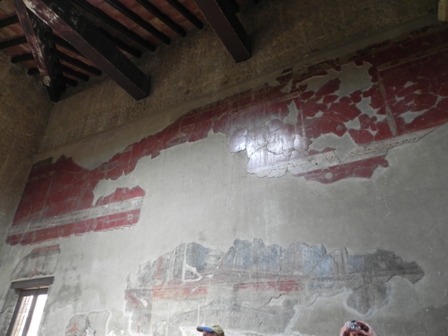
Our guide gave us a lot of details about how the paint
was applied to the plaster when it was still wet, so that the paint became
part of the wall itself, which is why so much has survived. |
In this house, there is a black wooden screen structure
in front of the large doorway (behind all the people). This was an unusual
feature, seen only in this house.
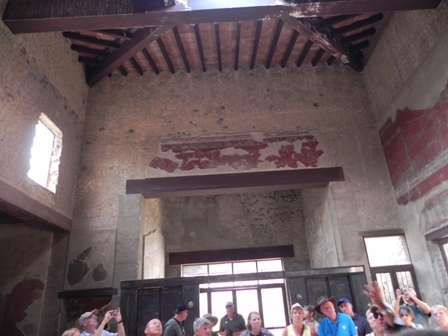 |
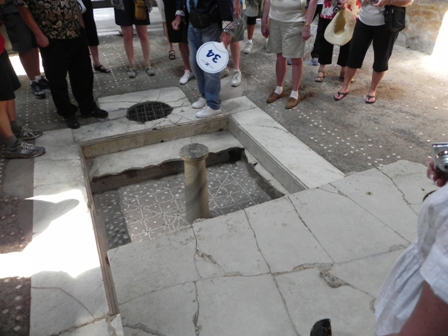
Some of these pools wee prettier than others. |
The typical house has a big central room, with a hole in
the ceiling/roof under which was this pool-like structure. Smaller rooms
were built into the walls of this larger room.
We missed the guide explaining why you would want a pool of potentially
murky rainwater in your living room.
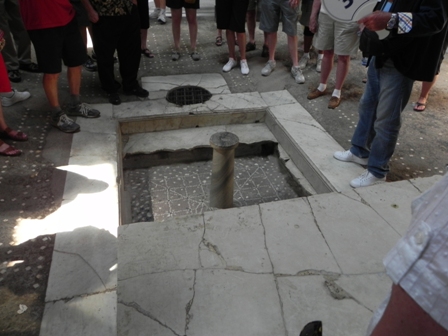 |
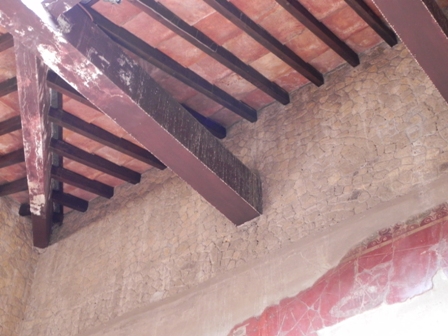
This is a reconstructed roof; those timbers are clearly
not original ;^) |
Here is a particularly pretty pool under the hole in the
roof
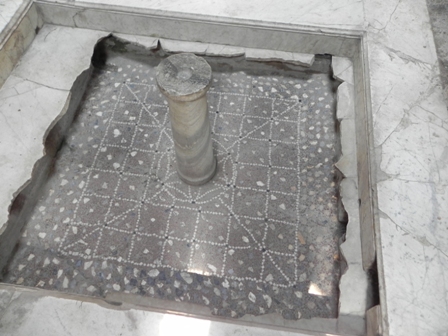 |
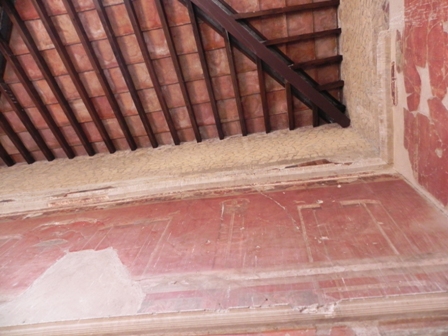 |
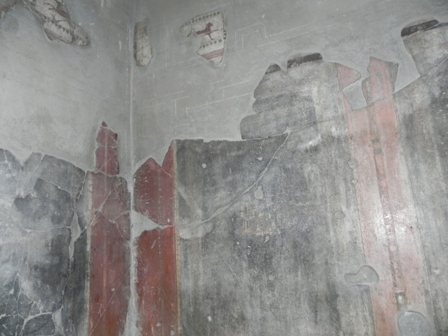 |
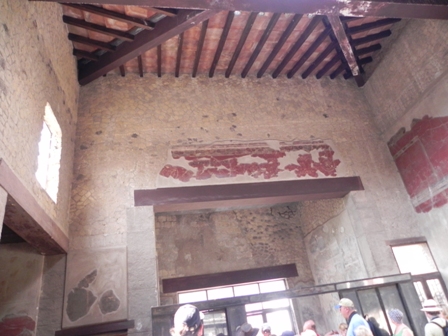
You can just barely make out the black wooden screen
structure in this photo (behind all the people). |
The fashion was to paint architectural details onto the
plastered walls. You can see here that it looks like a series of closed
windows or doorways depicted here.
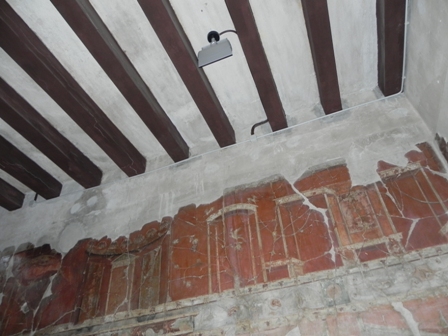 |
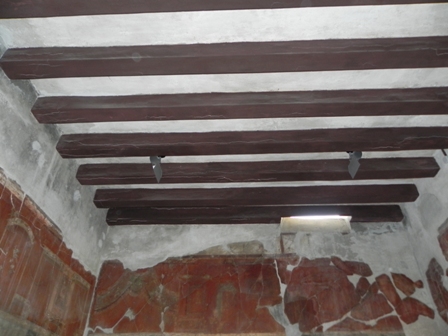 |
Lou took a lot of great pictures on this trip! He
was using his brand new Nikon CoolPix P-100. We spent a few hours pouring
over the user manual, learning about all the amazing modes and features.
Nothing like sitting on the balcony, listening to the sea, and reading about
how to take panoramic photos... or how to get the camera to find and focus
on a smiling face.
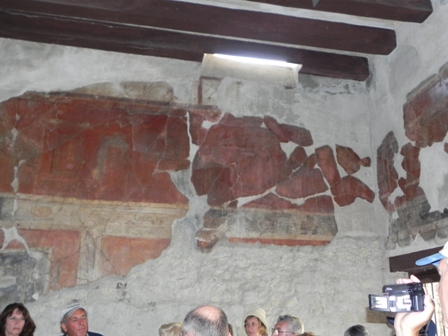 |
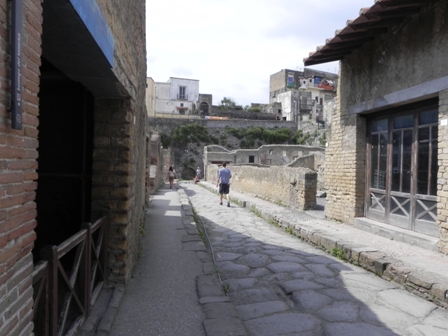
Near the beginning of the tour, we often seemed almost
alone in the ruins. Later on, the streets became more crowded. |
In some places, the curbs along the edge of the road were
very high, too high to easily step up. But not here.
When I think back to how hard it was to walk in Pompeii
or Ephesus, this place was a breeze.
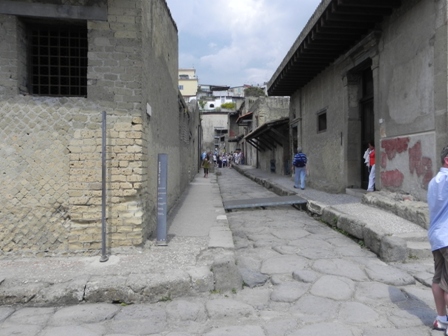 |
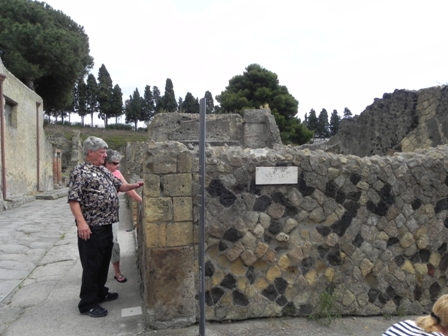
This was a particularly pretty wall, with the mix of
black stones.
In the lower right corner of this photo, you can see
Kathy in her black and white striped dress. |
Here is a pretty pool, with a nice lip around the
perimeter.
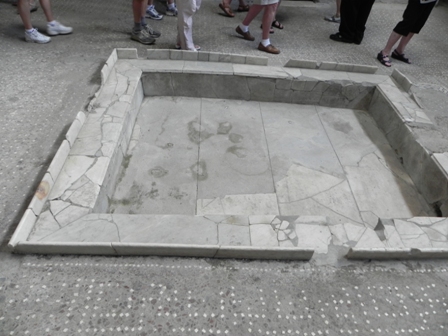 |
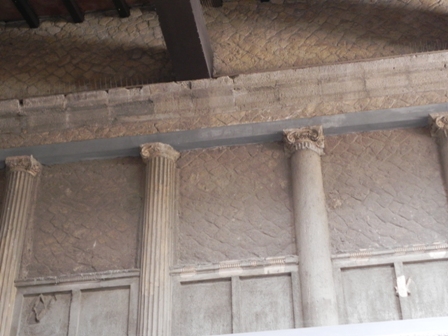 |
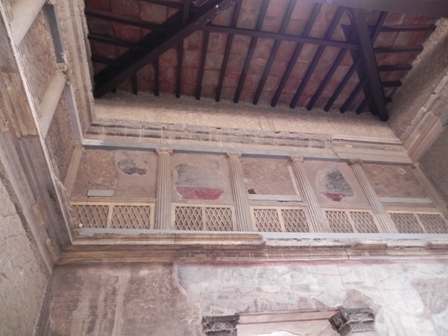 |
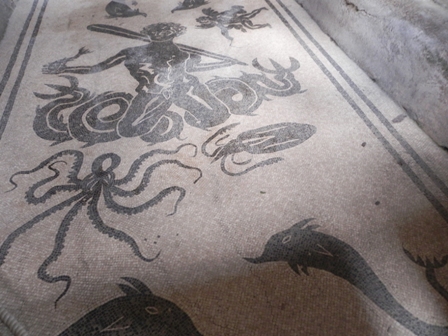
I think it might have been scary to look into the water
and see these creepy crawlies. You don't see this kind of tile work at the
YMCA pool, do you? |
We are in the bathhouse, and this is the mosaic on the
floor which we assume would be under water. There were chairs up high built
into the wall above this floor.
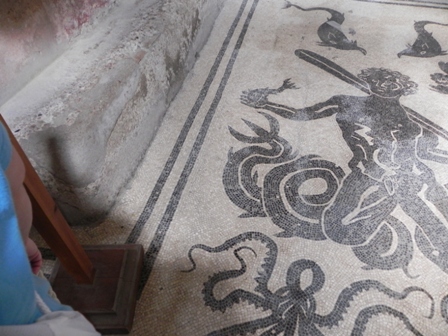 |
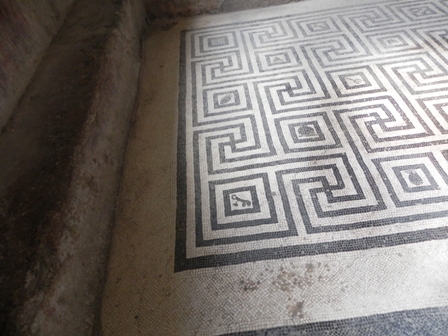
This is another room in the bathhouse. |
We took this opportunity to sit down and rest on the
benches built into the walls of this courtyard.
The window above the doorway is very cute.
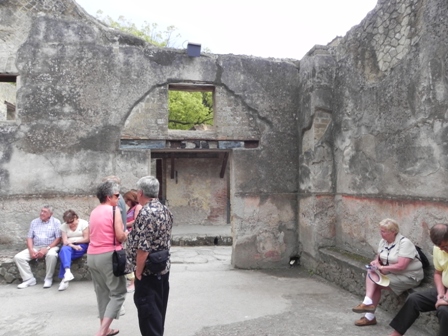 |
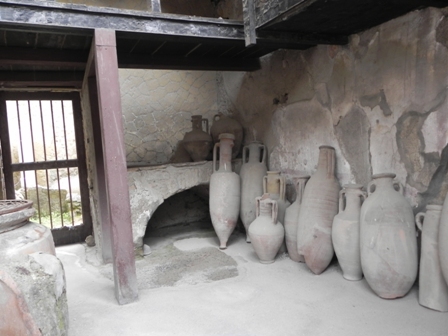
This was a shop, and those contains held either wine or
olive oil. |
The guide said that the wooden upper story here is
ORIGINAL and ANCIENT!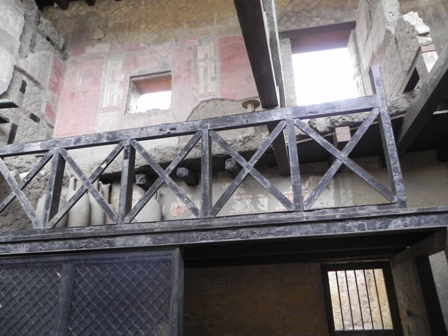 |
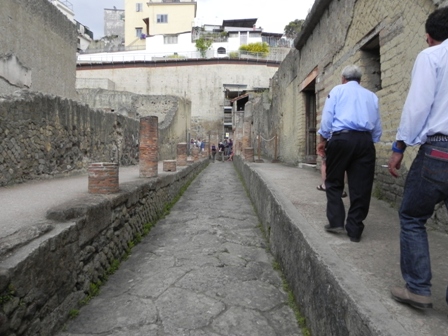
Now you can see where the curb is getting a little too
steep.
See the stumps of red brick columns along the left
side of the street? Those are the remains of columns that supported a
portico for shade. |
Here is a close-up of one of those column stumps. The red
brick was hidden by an outer coating.
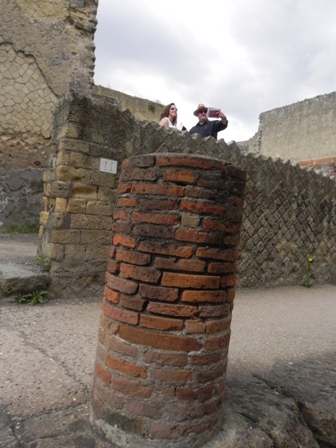 |
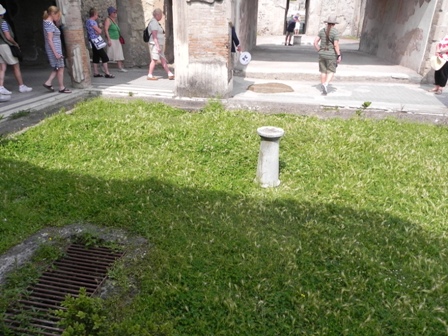
Nice lawn! |
Inside one of the shops, the archeologists have stacked
scraps of marble facades neatly.
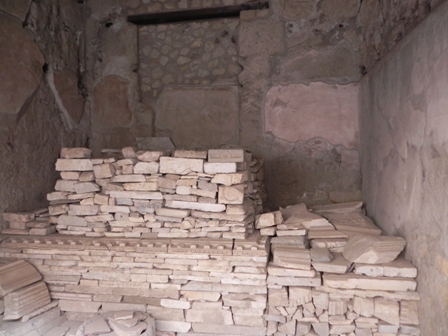 |
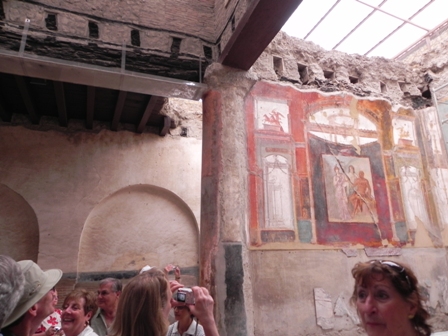
Some of the wall paintings were just amazing to behold!
This group of three figures shows some goddesses welcoming Hercules into the
city... maybe! Neither one of us can remember what the guide told us. But
the city was named for Hercules so I am pretty sure he is the guy pictured
here. |
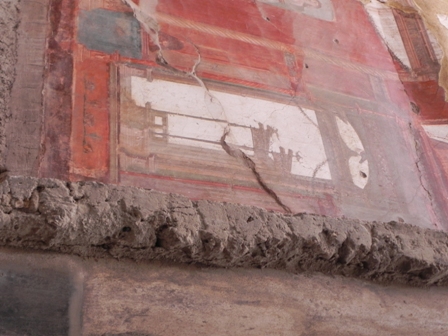 |
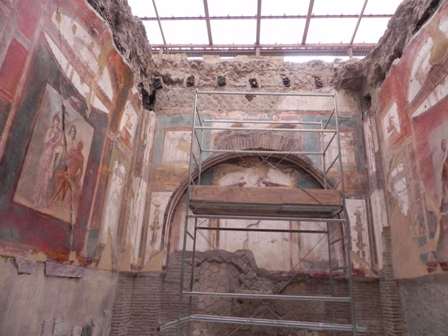 |
Oooh, here you can see more clearly the columns that held
up the portico, as well as some of the covering that hid the red bricks.
Something else you can see here embedded in the sidewalk
on the left: PIPES! They had a complex plumbing system.
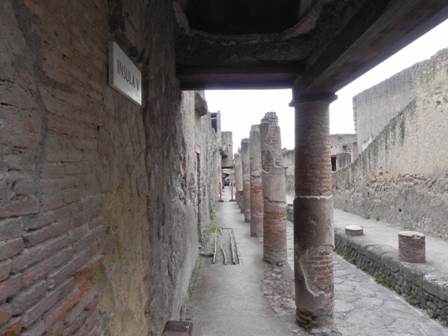 |
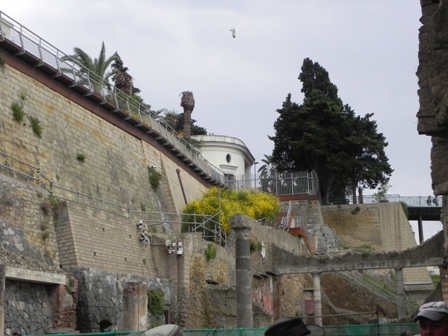
Here we are in the back corner. It is really clear here
how the modern world butts up against the ancient world. |
It started to rain on us! We put away the camera for
awhile and tried to stay dry. We think that we
were down in the ruins for about 2 and a half hours. We really had a
thorough and wonderful tour!
We passed people who were there on their own, using
the handheld audio tour machines. |
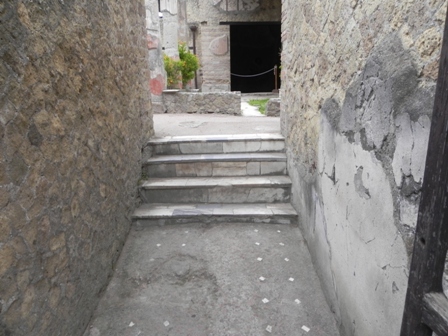
This marble stairway was just too pretty. |
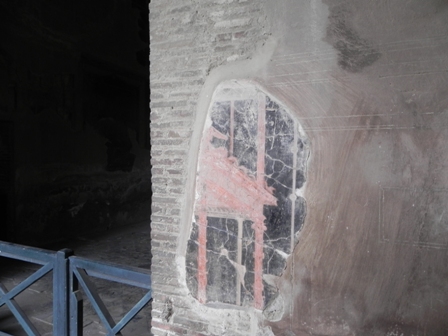 |